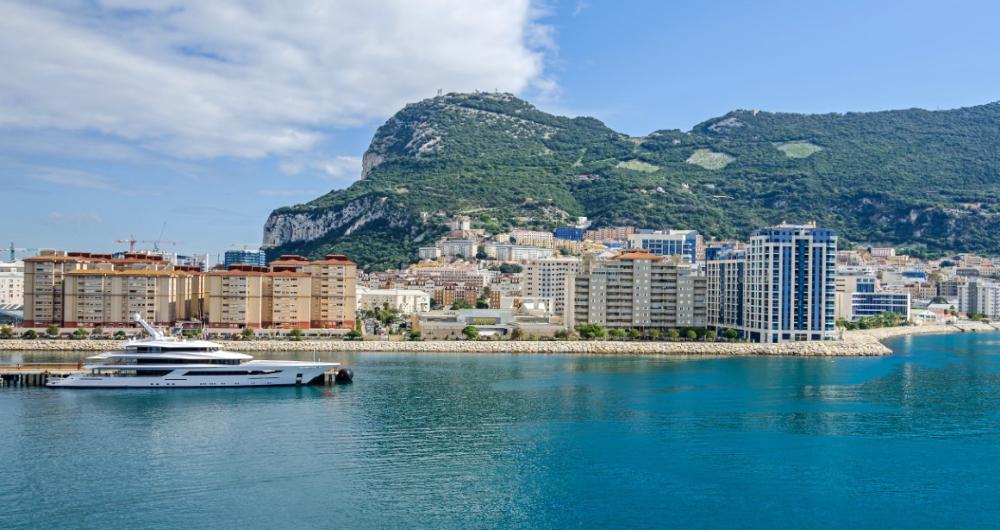In This Article
Looking for a unique destination where British culture meets Mediterranean landscapes? Head to Gibraltar! This fascinating British Overseas Territory at the southern tip of Spain blends seaside charm, rich military history, and epic natural wonders, all in just a few square miles. Perfect for day trips or short stays packed with adventure.
Gibraltar Highlights:
- The Rock of Gibraltar: Hike or ride the cable car to the top for breathtaking views across the Mediterranean to Africa.
- St. Michael’s Cave: Explore a dazzling limestone cave filled with stalactites, stalagmites, and colorful lighting displays.
- Apes’ Den: Meet Gibraltar’s famous Barbary macaques—the only wild monkeys in Europe!
- The Great Siege Tunnels: Walk through historic tunnels carved into the Rock during the 18th century for defense.
- Main Street: Shop duty-free, enjoy British pubs, and stroll colorful colonial-era streets downtown.
Best Time to Visit Gibraltar
The best time to visit is from late spring through early fall (May–October). Expect warm, sunny weather ideal for outdoor sightseeing, although summer (July–August) can be quite hot and busy. Winter is mild and quieter, perfect for hiking and history tours.
How to Get to Gibraltar
- By Plane: Gibraltar International Airport (GIB) has direct flights from the UK and select European cities. You can also fly into Málaga Airport (Spain) and drive about 1.5–2 hours south.
- By Car: Cross from La Línea de la Concepción (Spain) into Gibraltar via a pedestrian or vehicle border checkpoint.
- By Bus: Several buses run to La Línea from nearby Spanish cities like Málaga, Marbella, and Algeciras.
Where to Stay in Gibraltar
- The Rock Hotel – A historic luxury hotel with panoramic views over the bay and elegant colonial style.
- Sunborn Gibraltar – A floating 5-star hotel and casino on a superyacht docked in Ocean Village Marina.
- Holiday Inn Express Gibraltar – Modern, budget-friendly accommodation conveniently located near the airport and city center.
Best Things to Do in Gibraltar
1. Meet Gibraltar’s Famous Barbary Macaques Up Close at Ape’s Den

© valet/stock.adobe.com
Gibraltar’s most amusing attraction, Ape's Den hosts a colony of Barbary Macaques, which are native to Northern Africa. A number of myths offer speculation about how this species of apes were originally imported to southern Spain. One story suggests that the macaques travelled from Morocco across a subterranean tunnel that opened into St. Michaels cave, a wondrous limestone cave located in Gibraltar’s Upper Rock Nature Reserve. The macaques, which are small in size and irresistibly cute, roam freely in a semi-wild state. Visitors are warned to keep distance, however, to avoid intentional or accidental bites. It is strongly advised that travelers do not feed, harass, or overcrowd the monkeys. Sightseers can book educational, primatologist-lead tours.
Old Queen's Road, Gibraltar GX11 1AA, Gibraltar, Spain, Phone: +350-54-01-80-96
2. Step Into History and Explore the Defenses of the Great Siege Tunnels
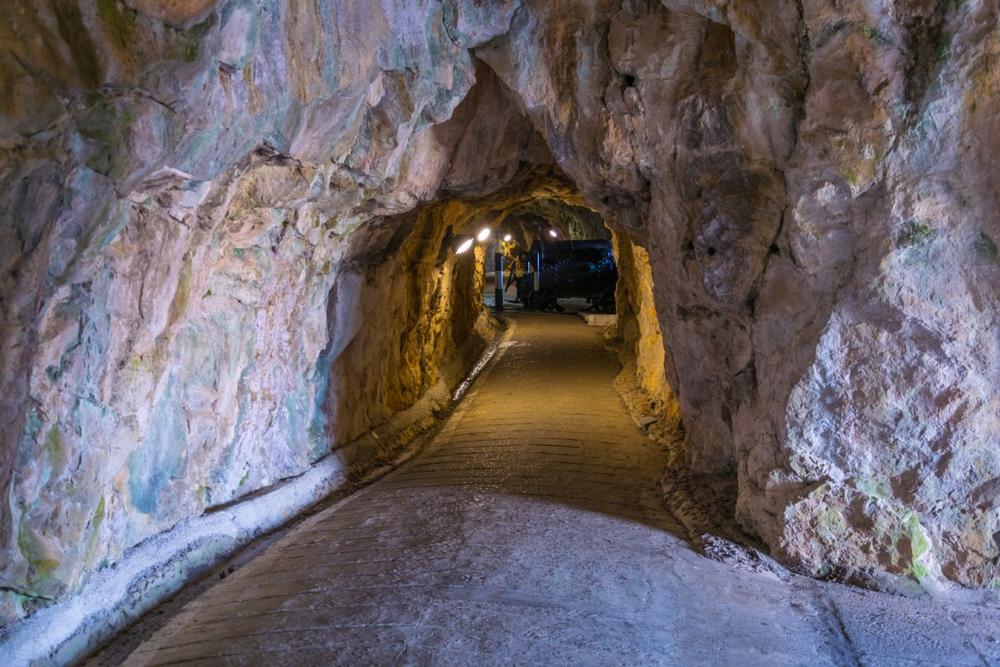
© dudlajzov/stock.adobe.com
The legendary tunnels form a labyrinth, originally designed by the British to act as a defense system during the Great Siege of 1779-1783, which greatly assisted their victory over the French and Spanish armies. Great Siege Tunnels were dug manually and blasted by gunpowder; a military effort headed by Sergeant Major Ince to secure guns onto a northern facing projection of the monstrous Rock of Gibraltar. Admission to the Gibraltar Nature Reserve allows visitors an elevated 360 degree view of Gibraltar and neighboring countries; sightseers can even see Africa. Guests can choose to walk the nature trails or upgrade tickets to include walks through the rock’s caves and historical tunnels.
Northern end of The Rock, Gibraltar GX11 1AA, Gibraltar, Spain, Phone: +350-20-07-16-33
3. If Ancient Artifacts and Military Legends Fascinate You, Visit the Gibraltar Museum
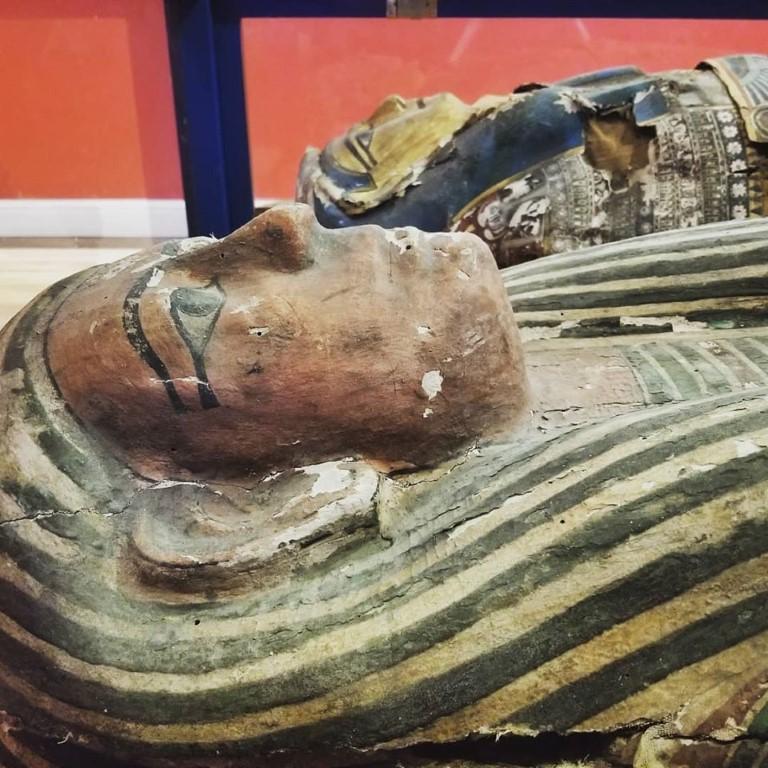
© Gibraltar Museum
The Gibraltar National Museum’s presents a comprehensive historical look at the events, culture, and natural history of Gibraltar. Exhibits feature works and artifacts dedicated to the Pleistocene era, history of fishing villages, Moorish culture and architecture, historical battles of Gibraltar, and more. Visitors can view items like 19th century glass grenades, mid-evil era Islamic lamps, and a Solutrean Flint arrow dating 20,000 years back. Tours of the World Heritage Site travel to Gorham’s Cave, the site of early Neanderthal settlers. Walks to the famous Mediterranean Steps and O’Hara’s Battery are included as part of the tour. There is a gift shop and a book shop on-site.
Gibraltar Museum, 18-20 Bomb House Lane, PO Box 939, Gibraltar, Spain, Phone: +350-20-07-42-89
What to do if you are traveling with kids:
4. Stroll Through Gibraltar’s Vibrant Heart With a Walk Through Casemates Square
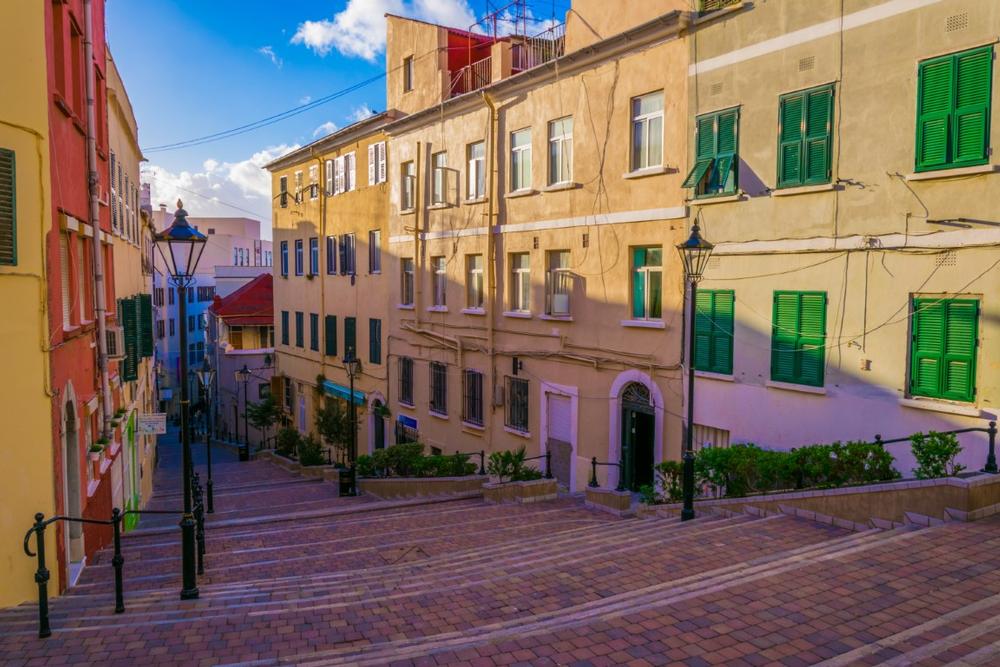
© dudlajzov/stock.adobe.com
Old Town is home to Casemates Square, the site of the Moorish Water Gate, which was a launching area for manually propelled galleys; the ominous-looking water vessels of the early 14th century. The infamous Battle of the Strait was centered around Gibraltar, where war raged among competing navies for control of its waters. Control of Gibraltar changed hands between the Moors, Spaniards, and the British. In later history, the strait would play a pivotal role during the World War. A wealth of cultural and historical diversity means there’s plenty to see and do. Travelers can visit the square’s massive limestone American War Memorial, Fish Market Lane, Reclamation Road, the British War Memorial, the Southport Gates, and more.
Grand Casemates Square, Gibraltar, Spain
5. Discover Centuries of Military Tradition and Royal History at The Convent
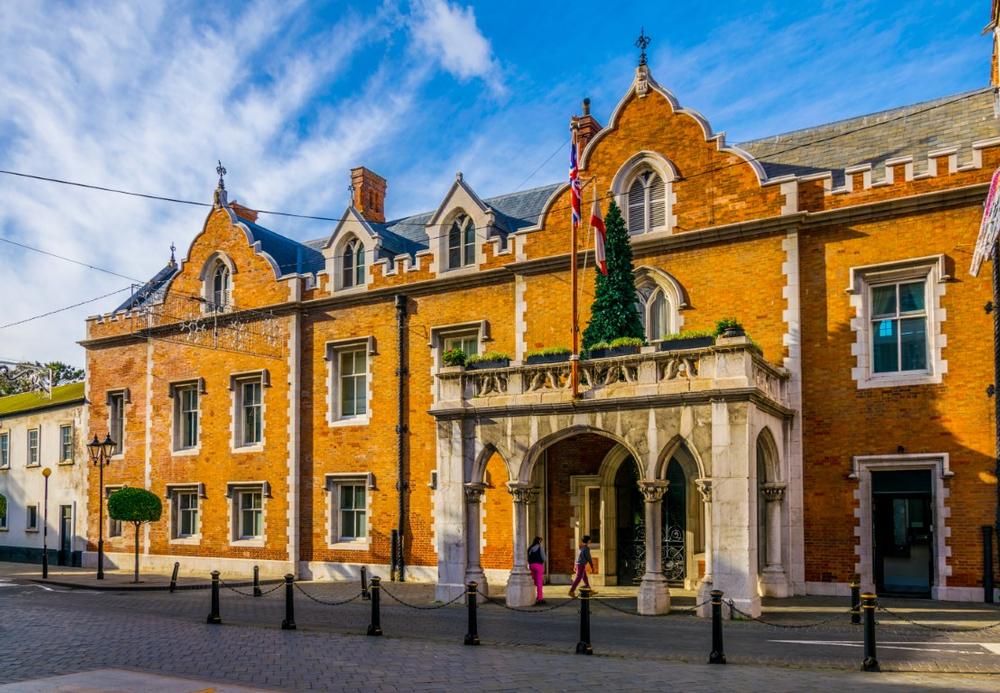
© dudlajzov/stock.adobe.com
In the early 16th century, The Convent belonged to the Franciscan friars of the Catholic church. It was rebuilt during the early 18th century before serving as the official residence for Gibraltar’s governors. The structure is known for its display of armories, which feature various coat of arms. Soldiers of the Royal Gibraltar Regiment conduct a guard mount a few days out of each week, and a Changing of the Guard a few times annually. The legendary tale of the “Lady in Grey”, a young nun who secretly married against her father’s wishes, takes place in The Convent, where it is said she was punished by live burial into one of its walls.
285 Main Street, Gibraltar GX11 1AA, Gibraltar, Spain, Phone: +350-20-04-50-00
Activities and Attractions for Couples:
6. Relax in Iconic Style and Savor Spectacular Views at The Rock Hotel
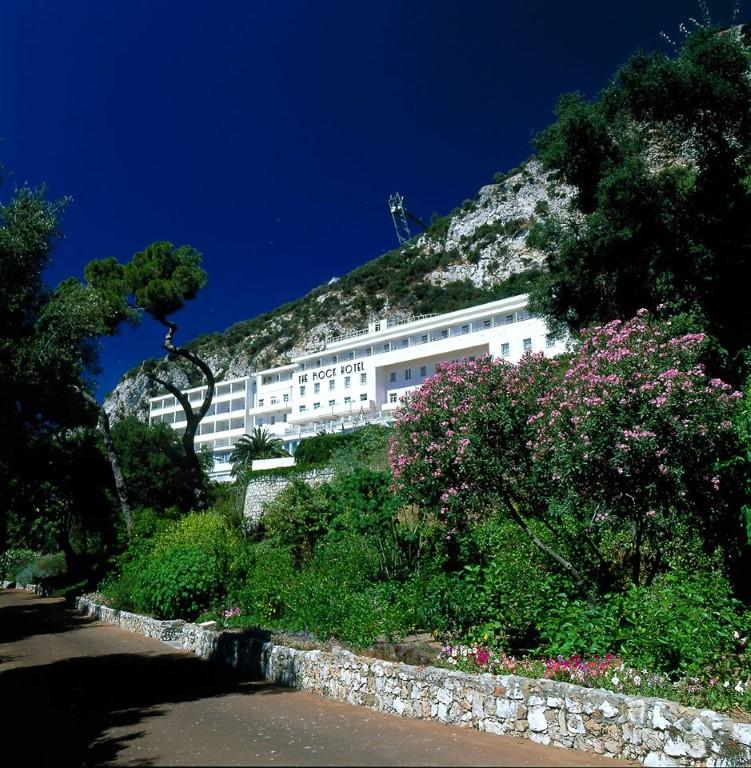
© The Rock Hotel
Nestled into the foothill beneath The Rock of Gibraltar, this luxury hotel boasts majestic views of the bay and the Gibraltar Strait. The hotel, first established in 1932, blends colonial era décor with modern-day amenities to host a lavishly unforgettable experience. Travelers can enjoy breathtaking views of the harbor and African coastline from any of the 94 guestrooms, each of which dons a balcony, while suites feature oversized terraces. The hotel’s exclusive Terrace Restaurant plates authentic Mediterranean cuisine. A proper English afternoon tea is served daily in the Lounge Bar and includes exquisitely prepared sandwiches, cakes, and scones. Mornings and afternoons are best spent at the massive outdoor swimming pool, which overlooks the Botanical Gardens.
The Rock Hotel, 3 Europa Road, Gibraltar, Spain, Phone: +350-20-07-30-00
7. Stand Where Continents Meet at Europa Point and Its Historic Lighthouse
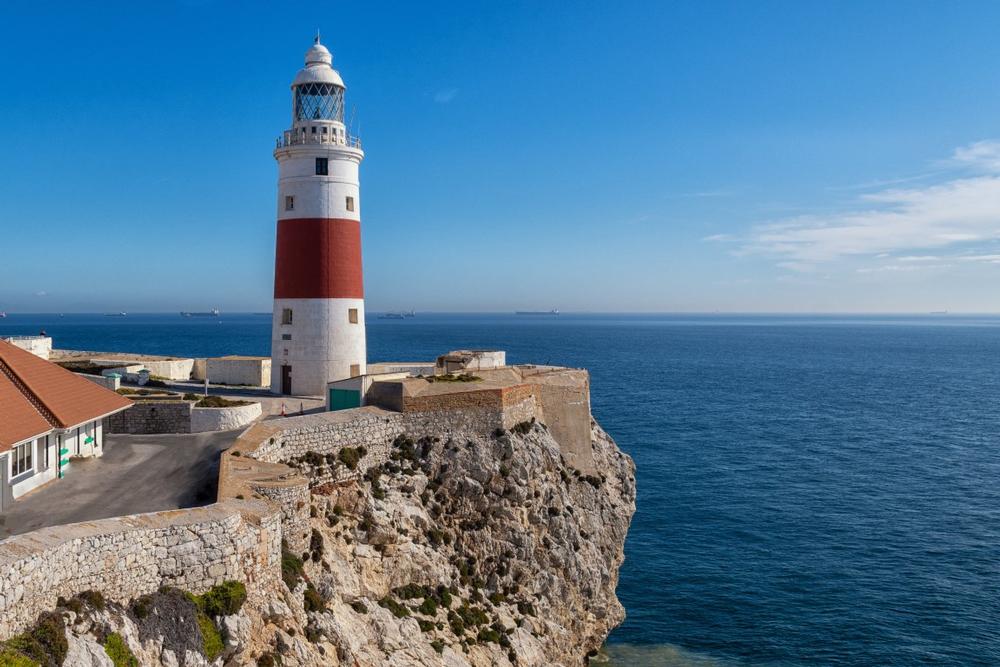
© Andreas/stock.adobe.com
The inlet to the Strait of Gibraltar is formed geologically by the Europa Point; located at the southernmost tip of Gibraltar, and the Jbel Musa; a small peninsula located at the northwestern tip of Morocco. Europa Point has ushered in mariners sailing in from the Mediterranean Sea for thousands of years, dating all the way back to ancient Greek and Phoenician times. The Rock of Gibraltar once served as a massive beacon, guiding ships towards the peninsula, which housed legendary marine caverns and platforms. In 1841, the Gibraltar Trinity Lighthouse was constructed, standing 49 meters above sea level. Today, the lighthouse operates on a fully automated system.
Europa Point & Lighthouse, Gibraltar GX11 1AA, Gibraltar, Spain, Phone: +350-20-04-50-00
8. Dine, Shop, and Sail Through the Chic Waterfront Vibes of Ocean Village
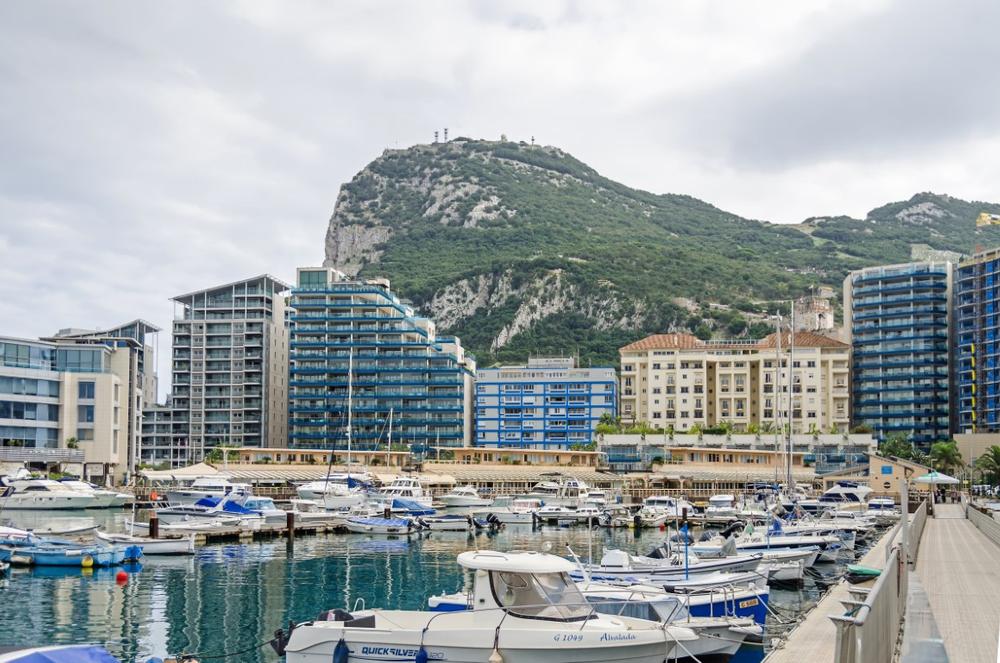
© laranik/stock.adobe.com
Ocean Village
is gathering place to over twenty bustling oceanfront restaurants and bars, teeming with mouthwatering Mediterranean cuisine and European cocktails. Yachters and sailors can moor in the Ocean Village Marina or the neighboring Marina Bay, which is also owned and operated by Ocean Village. Over 250 luxury berths include access to fresh water, power, and telephones. A superyacht expansion project is currently underway and plans for the construction of 144 waterfront apartments are slated to be completed in the coming years. Travelers flying into The Gibraltar International Airport should take advantage of the short nine-minute walk to Ocean Village and make it a first stop on the list of adventures.
World Trade Center Gibraltar, Unit 302, Bayside Road, PO Box 685, Gibraltar GX11 1AA, Gibraltar, Spain, Phone: +350-20-04-00-48
9. If Secret Underground Networks and Wartime Stories Intrigue You, Explore the WWII Tunnels
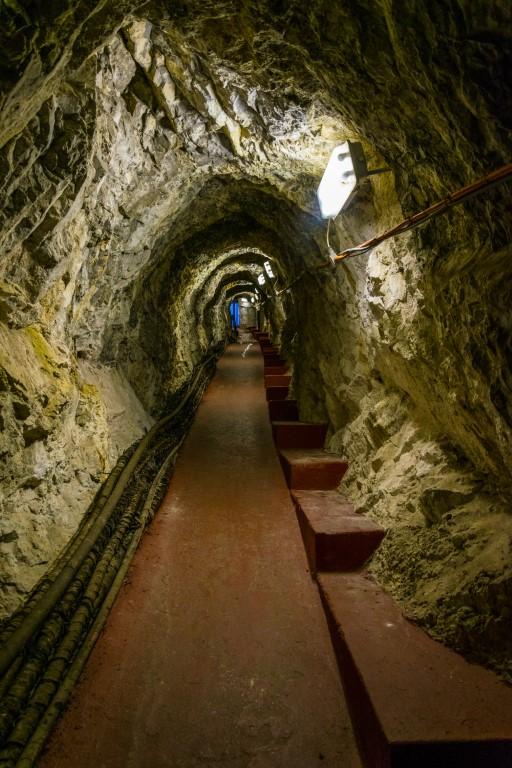
© dudlajzov/stock.adobe.com
During World War II military efforts expanded the tunnel system first constructed during the late 1700s to create more space for the storage of equipment, ammunition, and food. The Royal Engineers and Canadian army headed the project by contracting four separate specialized tunneling companies. The network of tunnels was so large and complex that it virtually created an underground city, capable of housing 16,000 troops. Power generators, a water distillery, a hospital, a vehicle maintenance shop, a bakery, and a telephone exchange were all contained within the subterranean dwelling. Tours of the tunnels run daily and cost eight pounds per person.
Second World War Tunnels, Willis's Road, Gibraltar GX11 1AA, Gibraltar, Spain, Phone: +350-20-07-16-43
10. Marvel at Nature’s Subterranean Wonder in the Stunning Saint Michael’s Cave
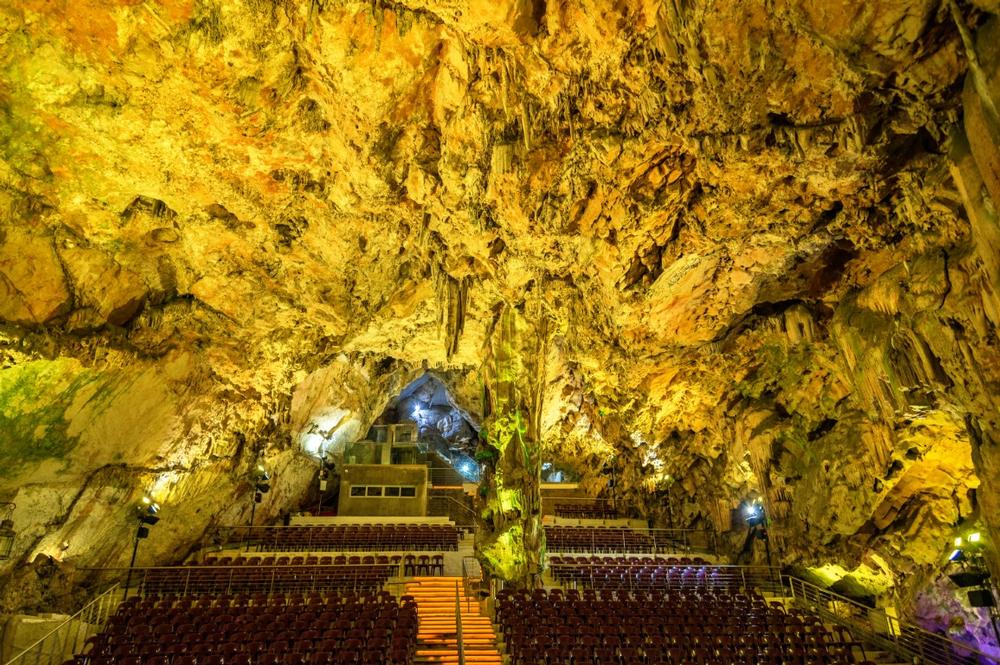
© Leonid Andronov/stock.adobe.com
Saint Michael's Cave is located in the Upper Rock Nature Reserve and is formed geologically by limestone. Inside, dramatic stalagmite structures hang from above, striking awe in all who enter. The cave has been the setting of countless legends and folklores. Some once believed that the cave was bottomless, while others claimed that the cave was connected to Africa by a subterranean passageway beneath the Strait of Gibraltar. There are several tales of military heroes undertaking secret missions to the cave, or vanishing in the cave, never to be seen again. Since the early 1960s, the cave has been used as a theatre seating up to six-hundred concert, drama, and ballet attendees. Visitors are welcomed daily.
Saint Michael Road, Gibraltar GX11 1AA, Gibraltar, Spain, Phone: +350-20-04-50-00
Where to Eat in Gibraltar
- La Parrilla – Excellent Spanish and Mediterranean grill dishes with harbor views.
- Jury’s Café & Wine Bar – Cozy spot downtown for tapas, wine, and hearty British comfort food.
- Casanova Restaurant – Italian classics and seafood specialties in an atmospheric setting.
If you are interested in local events:
- Gibraltar National Day (September 10) – Celebrations with parades, music, and a sea of red and white across town.
- Gibraltar International Literary Festival (November) – A gathering of authors, historians, and public figures for lectures and discussions.
- Calentita Food Festival (June) – A lively street food festival celebrating Gibraltar’s multicultural cuisine.
If you are looking for unique day trips within 30 Minutes of Gibraltar:
- La Línea de la Concepción (5 min) – Walk across the border and explore Spanish tapas bars and local markets.
- Algeciras (20–25 min) – A bustling port town with shopping, seafood, and access to ferries to Morocco.
- Sotogrande (30 min) – A luxury marina with upscale restaurants, golf courses, and beautiful beaches.
- Tarifa (30–40 min) – Spain’s southernmost town, famous for kitesurfing, beaches, and Moorish architecture (a little beyond 30 min but worth it).
- Castellar de la Frontera (30 min) – Visit a dramatic hilltop castle village with cobbled streets and panoramic views.
Frequently Asked Questions:
-
Where is Gibraltar located?
- Gibraltar is located at the southern tip of the Iberian Peninsula, forming the entrance to the Strait of Gibraltar along with its Moroccan counterpart, the Jbel Musa peninsula.
-
What is the significance of the Strait of Gibraltar?
- The Strait of Gibraltar connects the Mediterranean Sea with the Atlantic Ocean, making it an invaluable passageway for trade and naval warfare.
-
Has Gibraltar changed hands throughout history?
- Yes! As a much sought-after landform, control of Gibraltar has changed hands repeatedly over the ages due to its strategic importance.
-
Why should travelers visit Gibraltar?
- Gibraltar offers travelers a truly fascinating experience rich in maritime, wartime, and cultural history.
-
What are some must-see attractions in Gibraltar?
- Legendary attractions in Gibraltar include:
- The Rock of Gibraltar
- Saint Michael’s Caves
- The Great Siege Tunnels
Plan Your Trip


